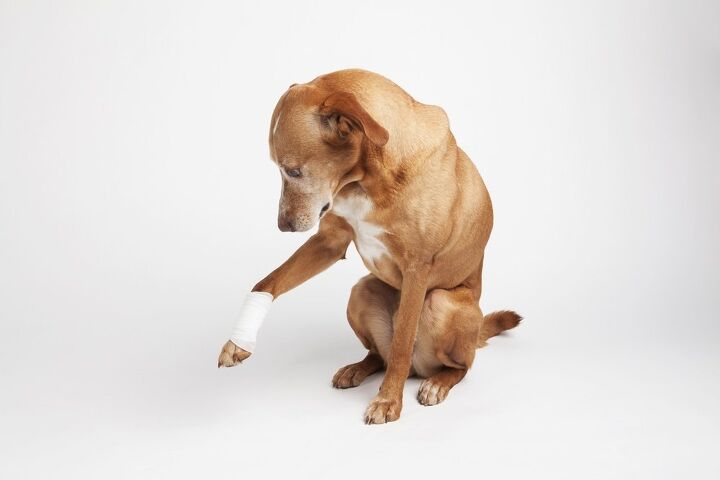Tetanus in Dogs: Symptoms, Causes, and Treatments

While you’ve likely heard about this serious medical condition, it’s probably not on your vaccine radar because it has been all but eradicated in North America. In fact, today’s tetanus vaccines can provide highly effective protection for up to 10 years from the time of inoculation. Great for humans, but what’s the deal when it comes to our pets? I mean, given that the toxins that lead to tetanus are generally picked up through deep, puncture-type wounds, wouldn’t that leave our always-busy four-legged kiddos highly vulnerable to becoming infected?
The short answer is no. Tetanus is as uncommon in dogs or cats in North America as it is in humans. Truth be told, our dogs are less susceptible to the effects of these toxins than we are as humans. But before we breathe a collective sight of relief remember that the term “less” doesn’t mean your pet is completely immune from this debilitating illness. The potential for him to become infected does exist, so let’s take a look at how you can recognize the signal that something is wrong and what steps you can take to both prevent and treat it.
What Exactly is Tetanus?
It’s a serious, toxin-related medical condition that is caused by the Clostridium tetani bacteria. The spores from this particular bacterium can be present in soil, feces, dust, and saliva and because it’s anaerobic, it doesn’t require oxygen to survive. That’s why deep puncture wounds are so effective at allowing it to flourish – once the skin heals, you don’t realize that the toxin is spreading.
How Was My Dog Infected?
Because the spores from Clostridium tetani are widespread and can survive for years in the environment, it’s easy for a dog to pick it up by simply walking through a contaminated area or being bitten by an infected animal. And because it thrives in a low-oxygen environment, you’re not likely to see any reaction around your pet’s wound such as swelling or infection. However, inside the wound, the bacteria are rapidly multiplying to produce the tetanospasmin toxin that will travel to his nervous system, spinal cord, and brain.
What Are the Signs of Tetanus?
Symptoms typically appear between 1 and 2 weeks after your pet becomes infected. They can include stiffness in his hind limbs, his neck, and jaw followed by an all-over stiffness throughout his legs and body. Your pet can also become hypersensitive to sudden sounds or movement and may suffer from muscle spasms if startled. Now, remember that dogs are highly resistant to tetanus which means it’s more likely you’ll find a little stiffness that’s restricted to the area around the wound – which will still need medical intervention.
How is Tetanus in Dogs Diagnosed and Treated?
If the entry wound is still present, your vet may debride the surrounding tissue to remove as much of the infection as possible and limit the toxin spread. But because the bacteria may have entered your pet’s system via a wound that has since healed, a visual exam won’t suffice. In that case, your vet will need to do a complete physical as well as blood tests to look for elevated white blood cells, urine tests to check for proteins, and likely electromyography which can identify electrical activity in the muscles caused by the spasms. Treatment is based on how quickly the condition has been caught and can range from the use of an anti-toxin in the early stages to antibiotics that help prevent it from spreading.
The best way to prevent your pet from being exposed to this type of bacteria is to stay on top of any injuries. Bathe, and thoroughly flush wounds, and watch for any symptoms that suggest he has become infected with the toxin. Again, it’s very rare for an animal in North America to contract Tetanus, but let’s be better safe than sorry, right?

Sharing space with three seriously judgy Schnoodles and a feline who prefers to be left alone. #LivingMyBestLife
More by Mary Simpson






















